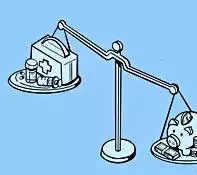
In 2023, National Health Accounts reported a reduction in OOPE from 69.4% in 2004-05 to 48.21% in 2018-19. The global average was 18.1% in 2019. Cost of medicines and hospitalisation are prime contributors to high expenditure. Central interventions like Ayushman Bharat and Pradhan Mantri Bhartiya Janaushadhi Pariyojana (PMBJP) have had positive impacts. However, there’s still a long way to go for several reasons. One, the public health insurance scheme Ayushman Bharat is underutilised, thanks to a lack of awareness of provisions and processes. Two, there is a rising incidence of non-communicable diseases such as diabetes, and cardiovascular and pulmonary ailments. And, three, there are continued challenges in controlling infectious diseases like tuberculosis and malaria.
Reducing OOPE will require higher public spending on healthcare, including strengthening the jan aushadhi kendra network, improving primary healthcare and hiring an adequate number of medical personnel. Tackling the drivers of poor public health on mission mode – air and water pollution and sanitation, particularly handling and management of municipal waste – is required for lowering OOPE and better health outcomes.










